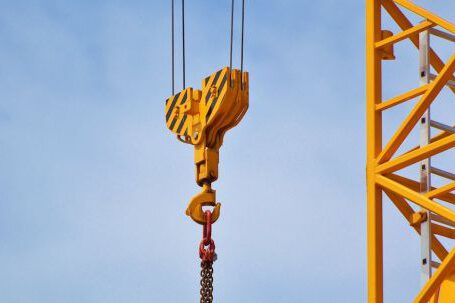Lifting equipment is essential for a wide range of industries, from construction to manufacturing. It is used for a variety of purposes, from moving heavy loads to lifting materials up to a certain height. There are many different types of lifting equipment available, each suited for a different purpose. This article will look at the different types of lifting equipment and their applications.
Hoists
Hoists are an essential piece of lifting equipment, used for lifting and lowering a load. They are typically powered by electric, air, or hydraulic power, and can be operated manually or with a remote control. There are several types of hoists, including chain hoists, cable hoists, and manual hoists. Chain hoists are the most common type of hoist, and are used for lifting items such as crates, boxes, and engines. Cable hoists are used for heavier loads, such as cars and steel beams. Manual hoists are used for smaller loads, such as furniture and tools.
Cranes
Cranes are used for lifting and moving large, heavy objects. They are typically powered by diesel, electric, or air, and can be operated manually or with a remote control. There are several types of cranes, including tower cranes, overhead cranes, jib cranes, and gantry cranes. Tower cranes are used for construction projects, and are usually located at the top of a tall building. Overhead cranes are used for lifting and moving heavy objects in factories and warehouses. Jib cranes are used for loading and unloading materials, and gantry cranes are used for lifting and moving large objects over a large area.
Forklifts
Forklifts are used for moving and lifting heavy materials in warehouses and factories. They are typically powered by diesel, electric, or air, and can be operated manually or with a remote control. There are several types of forklifts, including counterbalance forklifts, reach forklifts, and order picking forklifts. Counterbalance forklifts are used for lifting and moving heavy objects in warehouses and factories. Reach forklifts are used for lifting and moving materials in narrow spaces. Order picking forklifts are used for picking up and delivering small items in warehouses.
Scissor lifts
Scissor lifts are used for lifting and moving materials up to a certain height. They are typically powered by electric or air, and can be operated manually or with a remote control. There are several types of scissor lifts, including aerial scissor lifts, vehicle-mounted scissor lifts, and self-propelled scissor lifts. Aerial scissor lifts are used for lifting and moving materials up to a certain height, such as in construction projects. Vehicle-mounted scissor lifts are used for lifting and moving materials in warehouses and factories. Self-propelled scissor lifts are used for lifting and moving materials in narrow spaces.
Conveyors
Conveyors are used for moving materials from one point to another. They are typically powered by electric or air, and can be operated manually or with a remote control. There are several types of conveyors, including belt conveyors, roller conveyors, and chain conveyors. Belt conveyors are used for moving materials over long distances. Roller conveyors are used for moving materials up an incline, such as in warehouses and factories. Chain conveyors are used for moving materials in areas with limited space.
Conclusion
Lifting equipment is essential for a wide range of industries, from construction to manufacturing. There are many different types of lifting equipment available, each suited for a different purpose. This article has looked at the different types of lifting equipment and their applications, including hoists, cranes, forklifts, scissor lifts, and conveyors. All of these pieces of equipment are essential for safely and efficiently lifting and moving materials in workplaces and construction sites.






